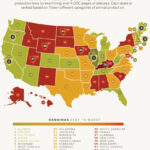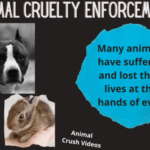In Australia, animal cruelty manifests as a multifaceted issue, encapsulated within a legal framework designed to protect the rights and welfare of animals. This framework, though comprehensive, often prompts extensive debate regarding its adequacy in deterring malefactions against animals. Understanding animal cruelty in Australia requires an exploration not only of the legal statutes in place but also of the cultural attitudes and societal values that influence and shape this protective paradigm.
Animal cruelty broadly encompasses the infliction of harm, unnecessary suffering, or distress to animals, whether it be through acts of commission or omission. In its most egregious forms, it includes physical abuse, neglect, and exploitation. Yet, this terminology can convolute the public perception, sometimes overshadowing the less overt forms of cruelty that persist in everyday practices, such as factory farming and the fur trade. These practices, while legally permissible, provoke ethical quandaries about what constitutes humane treatment of animals.
Australia’s legal framework for combating animal cruelty is primarily governed by various state and territory laws, as well as federal legislation. Each jurisdiction has its own set of regulations and provisions. For example, the Animal Welfare Act of 1992 in the Australian Capital Territory, the Prevention of Cruelty to Animals Act 1979 in New South Wales, and similar statutes across Queensland, Victoria, South Australia, Western Australia, and Tasmania highlight a decentralized approach. While this allows for localized responses, it also results in inconsistencies that can confuse both the public and those seeking justice for animals.
Under these various statutory frameworks, the definitions of cruelty are often consistent but include diverse stipulations. For instance, the laws define ‘cruelty’ as the act of causing harm, suffering, or injury to an animal, or failing to provide necessary care. Consequently, the legal repercussions for animal cruelty can vary tremendously, influenced by factors such as the severity of the act, intent, and prior convictions. Penalties range from monetary fines to imprisonment, but enforcement remains a significant hurdle. Critics often argue that the punitive measures are insufficient compared to the societal outrage elicited by notorious cases of animal cruelty, illuminating a gap between legislation and societal expectations.
Public perception plays a crucial role in shaping these laws and their enforcement. The burgeoning interest in animal rights advocacy and a transition towards a more empathetic view of animals signify an underlying cultural shift. Such transformations have garnered increased media attention, often spotlighting high-profile cases that galvanize public sentiment against cruelty. Instances of extreme animal abuse, whether in domestic settings or through commercial exploitation like puppy mills, provoke outrage, underscoring a collective recognition of animals as sentient beings deserving of welfare consideration.
The complexities of animal welfare extend beyond individual acts of cruelty. They engage with broader societal issues such as industrial farming practices, scientific research, and entertainment. These areas provoke ethical questions regarding the justification of suffering for economic gain or human entertainment. The question arises: how can society sanction practices that, while legal, evoke profound moral objections? This dissonance reveals an inherent tension within cultural norms, where traditional views of human dominion over animals coalesce with emerging paradigms that advocate for animal rights and welfare.
In response to this tension, animal rights groups have intensified their advocacy. Grassroots movements, alongside established organizations, persistently challenge the status quo, demanding reforms that reflect contemporary ethical stances on animal treatment. From campaigns aimed at banning cruelty-laden farming practices to improvements in the conditions of animals used for entertainment, these activists strive to infuse public discourse with the clear message that animal welfare is a paramount concern that transcends legal compliance.
Moreover, education plays a pivotal role in altering perceptions regarding animal cruelty. Initiatives geared towards teaching compassion and welfare considerations, particularly in schools, can have long-lasting impacts on societal attitudes. By fostering empathy towards animals in the younger generation, there is a potential to cultivate a more conscious society that inherently opposes cruelty.
Yet, the challenge lies in the inherent difficulty of proving animal cruelty in legal contexts. Unlike in cases of human abuse, finding clear evidence of distress or suffering in animals can prove problematic. The subjective nature of animal emotions further complicates legal processes. Hence, the role of veterinary professionals becomes crucial, and as society increasingly recognizes their expertise, the integration of their testimonies in legal proceedings may enhance the prosecution of cruelty cases.
Future reforms must address these multifarious challenges. Legal frameworks should be harmonized across jurisdictions, establishing a consistent standard for what constitutes cruelty. Additionally, increasing the severity of penalties may serve as a deterrent, while also enhancing the resources allocated for enforcement. The incorporation of educational programs and a stronger focus on animal welfare within legal discourse can further bolster the fight against cruelty.
In conclusion, while Australia possesses a foundational legal framework intended to combat animal cruelty, the effectiveness of these laws remains inconsistent. The ongoing dialogue surrounding animal rights embodies a societal evolution towards greater empathy and moral responsibility. Only through concerted efforts in education, advocacy, and legislative reform will Australia be able to navigate the complexities of animal welfare meaningfully, ensuring that cruelty is neither tolerated nor accepted in any form.







